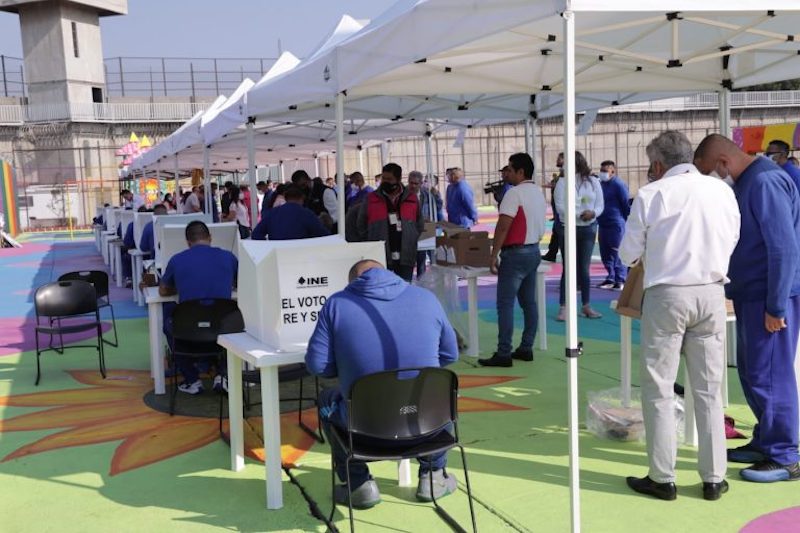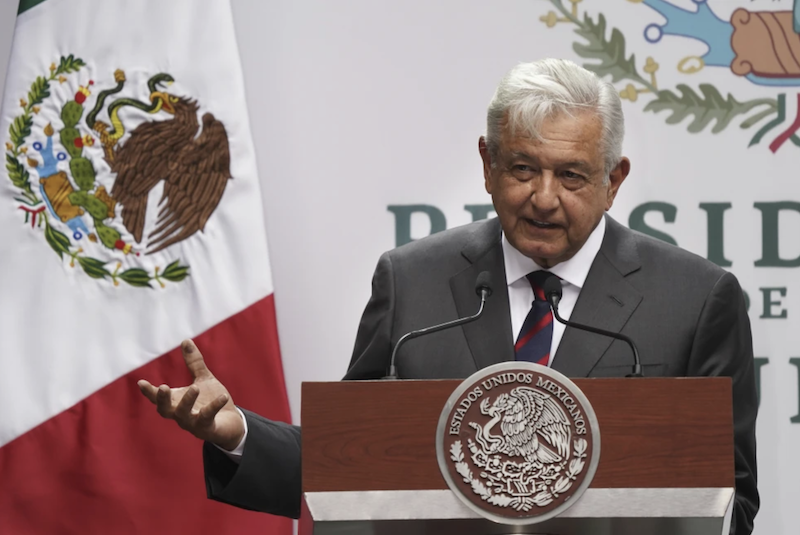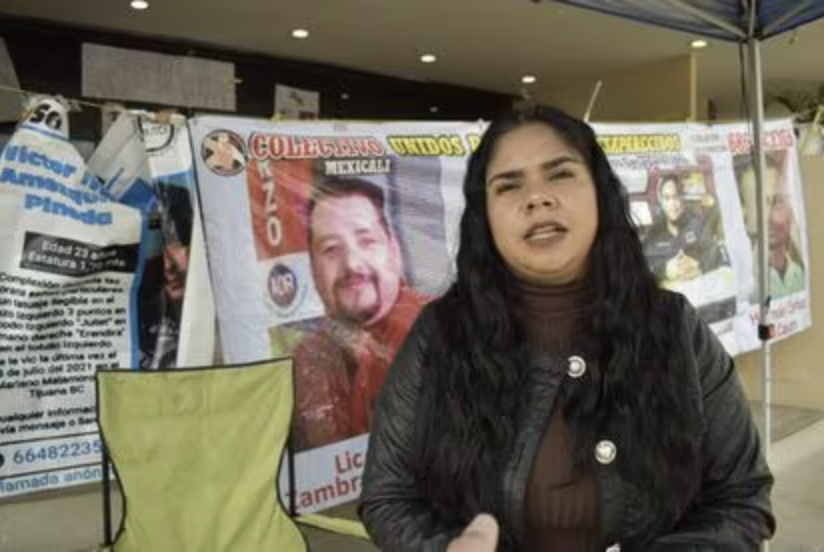 08/26/13 – The growing number of attacks against journalists in Mexico and the tendency for such cases to go unsolved has led to the demand for increased government action to address the problem. The most recent call came from Mexico’s National Commission on Human Rights (Comisión Nacional de los Derechos Humanos, CNDH) when it issued “General Recommendation Number 20: Offenses to Journalists in Mexico and the Prevailing Impunity” to the federal government. Published on August 15, the CNDH recommendation was directed specifically towards the Interior Ministry (Secretaría de Gobernación, SEGOB) and its National Security Commission (Comisión Nacional de Seguridad, CNS), the Attorney General’s Office (Procuraduría General de la República, PGR), the head of the Federal District Government (Jefatura de Gobierno del Distrito Federal), and the state Secretaries of Public Security (Secretarios de Seguridad Pública) and Attorney Generals (Procuradores Generales de Justicia).
08/26/13 – The growing number of attacks against journalists in Mexico and the tendency for such cases to go unsolved has led to the demand for increased government action to address the problem. The most recent call came from Mexico’s National Commission on Human Rights (Comisión Nacional de los Derechos Humanos, CNDH) when it issued “General Recommendation Number 20: Offenses to Journalists in Mexico and the Prevailing Impunity” to the federal government. Published on August 15, the CNDH recommendation was directed specifically towards the Interior Ministry (Secretaría de Gobernación, SEGOB) and its National Security Commission (Comisión Nacional de Seguridad, CNS), the Attorney General’s Office (Procuraduría General de la República, PGR), the head of the Federal District Government (Jefatura de Gobierno del Distrito Federal), and the state Secretaries of Public Security (Secretarios de Seguridad Pública) and Attorney Generals (Procuradores Generales de Justicia).
To be clear, the CNDH receives thousands of complaints of human rights abuses each year, the most serious of which are investigated and, if unresolved by the parties involved, result in a formal recommendation issued by the CNDH. The recommendation serves as a way for the CNDH to credibly accuse an authority (or authorities) for violating human rights by delivering an extensive and thoroughly detailed account of the alleged human rights abuses in a particular case. A general recommendation like the one recently issued regarding violence against journalists differs in that the report addresses the systematic abuse that has occurred over time as opposed to a one-time offense. As the CNDH’s rules of procedure explains, the CNDH issues “general recommendations to different government authorities in the country, with the purpose of promoting changes to norms and administrative practices that lead to human rights violations.”
This 56-page recommendation argues that the federal government needs to do more to meet its constitutional obligation of both protecting journalists’ human rights and bringing to justice perpetrators of human rights abuses. The first paragraph alone spells out the federal authorities’ duty “to promote, respect, protect, and guarantee human rights” and “to prevent, investigate, penalize, and repair human rights violations,” as established by Article 1 in the Mexican Constitution. The recommendation asserts that the increasing violence towards journalists is not only a violation of their individual human rights, but also a violation of the rights of freedom of speech, expression, and the public’s right to access information.
According to the CNDH, it received 842 complaints of human rights violations against journalists and members of the media from January 1, 2000, to July 31, 2013, with a steady increase in the number of complaints each year. 2011 and 2012 saw the most complaints with 98 each, a dramatic increase from the 13 complaints registered in 2000. Of the 85 journalists CNDH reports were killed during that time, 14% were in Tamaulipas and another 14% in Veracruz, 13% in Chihuahua, and almost 12% in Guerrero. There were 20 states in which a journalist was killed (including the Federal District), and more than one third of cases happened in a border state (36.5%). Not only have the homicides targeting journalists continued, but the CNDH also points to the prevailing impunity of the perpetrators in such cases, noting that only 12 of the 85 homicides CNDH has identified have resulted in a conviction. The CNDH also reports that 20 journalists have been forcibly disappeared from 2005 through July 2013, and that 40 media locations (buildings, infrastructure, offices, etc.) have been attacked from 2006 to July 2013, nearly 75% of which occurred in the border states of Tamaulipas (10), Coahuila (9), Nuevo León (7), Chihuahua (2), and Sonora (1).
 The CNDH’s recommendation comes on the heels of other recent calls for more government action and published data showing the increase in violence towards journalists and members of the media. As Justice in Mexico noted previously, the Washington Office on Latin America criticized the Mexican government for failing to fully implement the 2012 Law for the Protection of Human Rights Defenders and Journalists (Ley para la Protección de Personas Defensoras de Derechos Humanos y Periodistas) a year after it was passed. Meanwhile, the organization Artículo 19 reported that it had found “151 aggressions against freedom of expression in Mexico” during the first half of 2013. For its part, the National Center for Social Communication (Centro Nacional de Communicación Social, CENCOS) found that “in the first 100 days of the Enrique Peña Nieto government, there were 56 attacks against journalists.” Adding to the data, Viridiana Ríos, the advisor for Mexico’s Ministry of the Treasury (asesora de la Secretaria de Hacienda and Credito Público), wrote in Nexos this month that 56 journalists had been killed in Mexico in the past ten years, and 96% of those cases were never brought to justice.
The CNDH’s recommendation comes on the heels of other recent calls for more government action and published data showing the increase in violence towards journalists and members of the media. As Justice in Mexico noted previously, the Washington Office on Latin America criticized the Mexican government for failing to fully implement the 2012 Law for the Protection of Human Rights Defenders and Journalists (Ley para la Protección de Personas Defensoras de Derechos Humanos y Periodistas) a year after it was passed. Meanwhile, the organization Artículo 19 reported that it had found “151 aggressions against freedom of expression in Mexico” during the first half of 2013. For its part, the National Center for Social Communication (Centro Nacional de Communicación Social, CENCOS) found that “in the first 100 days of the Enrique Peña Nieto government, there were 56 attacks against journalists.” Adding to the data, Viridiana Ríos, the advisor for Mexico’s Ministry of the Treasury (asesora de la Secretaria de Hacienda and Credito Público), wrote in Nexos this month that 56 journalists had been killed in Mexico in the past ten years, and 96% of those cases were never brought to justice.
Violence against journalists is not only a threat to human rights; it also undermines Mexico’s arguably nascent democracy. According to Dr. Emily Edmonds-Poli, professor of Political Science at the University of San Diego, the increasing violence results in threats to freedom of expression and access to information. Journalists are often self-censored in their reporting, bribed by criminal organizations to publish, and compromised in their ability to both accurately and safely report stories. As Edmonds-Poli writes in her report on the drug war’s effects on the Mexican press and democracy, “both freedom of expression and access to alternative sources of information, two functions of an independent press, are essential for democracy because they allow citizens to be introduced to new ideas, engage in debate and discussion, and acquire the information they need to understand the issues and policy alternatives…If the citizen, particularly at the local level, is unable to learn about, much less do something about, the crime and corruption in their cities, the result is a threat to the rule of law and the quality of democracy in Mexico.”
The problem is not only the act of violence and resulting threat to democracy, but also the culture of impunity that plagues Mexico and fails to deter such targeted attacks. While the CNDH argues that “the rate of impunity against criminal cases involving violence against media workers is well over 90%,” Edmonds-Poli notes that only one perpetrator of targeted violence against a member of the media has been prosecuted since 2006. Mexico, one of the most dangerous countries for a journalist to work in the world, is currently ranked seventh on the Committee to Protect Journalist’s 2013 Impunity Index, released in May 2013.
The CNDH’s recent general recommendation is its twentieth since it began in 1990, and only the second general recommendation to focus exclusively on violence against journalists. The first came in 2009 when CNDH issued its “General Recommendation Number 17: Cases of Aggression towards Journalists and the Prevailing Impunity.” Since its earlier recommendation, the CNDH has reported a significant increase in violence against journalists and media workers: homicides increased by 63.4%, disappearances by 185.7%, and threats of violence by 566.6%. A major difference between the 2009 and 2013 recommendations is that in the past, the authorities named in the document did not have to respond to the CNDH’s recommendations. However, Congress approved a reform in 2013 requiring that all entities to which a recommendation is directed to must either comply with its terms or publicly explain why they refuse to do so. This reform is intended to hold authorities more accountable for their actions or inactions in protecting human rights in Mexico.
Sources:
“Getting Away with Murder.” Committee to Protect Journalists. May 2, 2013.
Ríos, Viridiana. “¿Quién mata a los periodistas?” Nexos. August 8, 2013.




